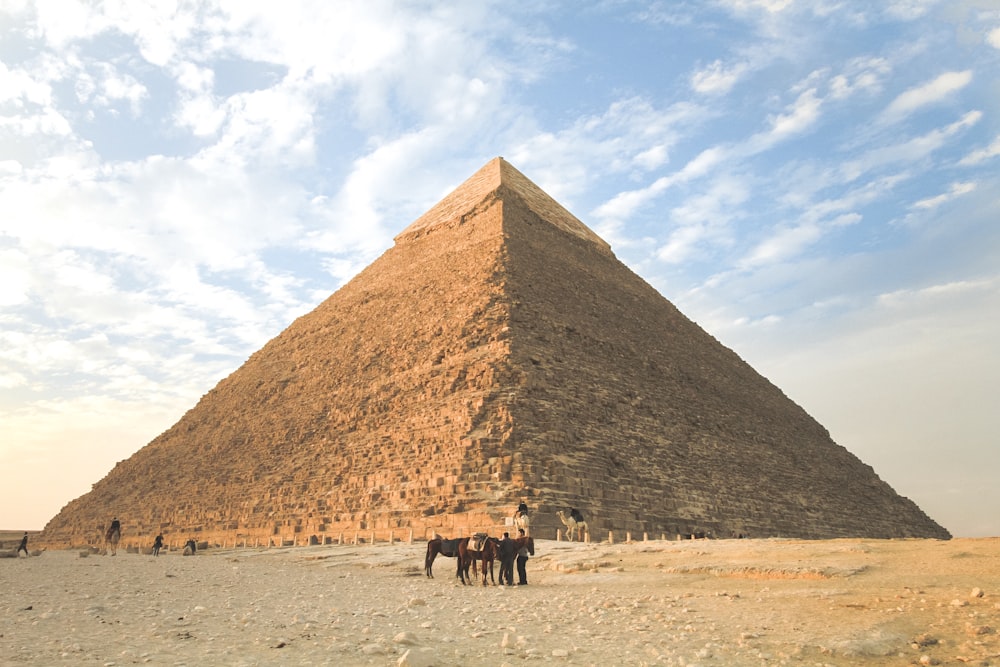Debunking the Myth: Is the Great Pyramid a Tomb?

The Great Pyramid of Giza, one of the Seven Wonders of the Ancient World, has long fascinated historians, archaeologists, and enthusiasts alike. Among the various theories surrounding its purpose, the most prevalent is that it served as a tomb for the pharaoh Khufu. However, upon closer examination of the evidence, it becomes apparent that this theory is not as clear-cut as it may seem. In this blog post, we will delve into the question: Is the Great Pyramid truly a tomb?
Unveiling the Mystery:
The assertion that the Great Pyramid was built as a tomb primarily stems from the discovery of a sarcophagus in the King's Chamber. However, this assumption overlooks several crucial factors that challenge the idea of the pyramid solely serving as a burial monument.
- Lack of Hieroglyphs: Unlike other Egyptian pyramids, the Great Pyramid lacks inscriptions, paintings, or hieroglyphs that typically adorn royal tombs. This absence of any explicit funerary texts raises doubts about its intended use as a burial site.
- Architecture and Engineering Marvel: The precision and complexity of the Great Pyramid's construction suggest a purpose beyond mere burial. Its alignment with celestial bodies and mathematical precision in design indicate an advanced understanding of astronomy and geometry, hinting at a more profound significance.
- Multiple Chambers: The Great Pyramid contains several chambers and passageways, not all of which seem consistent with a traditional tomb structure. The Queen's Chamber, for instance, lacks any burial artifacts, while the Grand Gallery and Subterranean Chamber serve unclear purposes within a burial context.
- Unusual Sarcophagus: While a granite sarcophagus was found within the King's Chamber, it was empty upon discovery, and its design differs significantly from typical burial sarcophagi. Moreover, the chamber's dimensions make it challenging to maneuver a sarcophagus of its size into place, raising questions about its original purpose.
Alternative Theories:
In light of these discrepancies, alternative theories regarding the Great Pyramid's function have emerged, challenging the tomb hypothesis.
- Astronomical Observatory: Some researchers propose that the Great Pyramid served as an astronomical observatory, with its alignment and geometry facilitating the observation of celestial phenomena such as solstices, equinoxes, and stellar alignments.
- Symbol of Power and Authority: Others suggest that the pyramid symbolized the pharaoh's divine authority and power, serving as a monumental structure to showcase the ruler's supremacy rather than as a burial site.
- Spiritual and Ritualistic Purposes: It's also plausible that the Great Pyramid had spiritual or ritualistic significance, playing a central role in religious ceremonies, initiations, or other esoteric practices of ancient Egyptian culture.
Conclusion:
While the traditional belief that the Great Pyramid of Giza was built as a tomb for Pharaoh Khufu persists, the lack of conclusive evidence and the monument's architectural complexity warrant a reevaluation of this theory. The absence of hieroglyphs, the precision of construction, and the presence of multiple chambers suggest that the pyramid served a purpose beyond mere burial. Alternative theories propose its function as an astronomical observatory, a symbol of power, or a site for spiritual rituals. Ultimately, the true purpose of the Great Pyramid remains shrouded in mystery, inviting further exploration and speculation into one of the world's most iconic structures.






















































